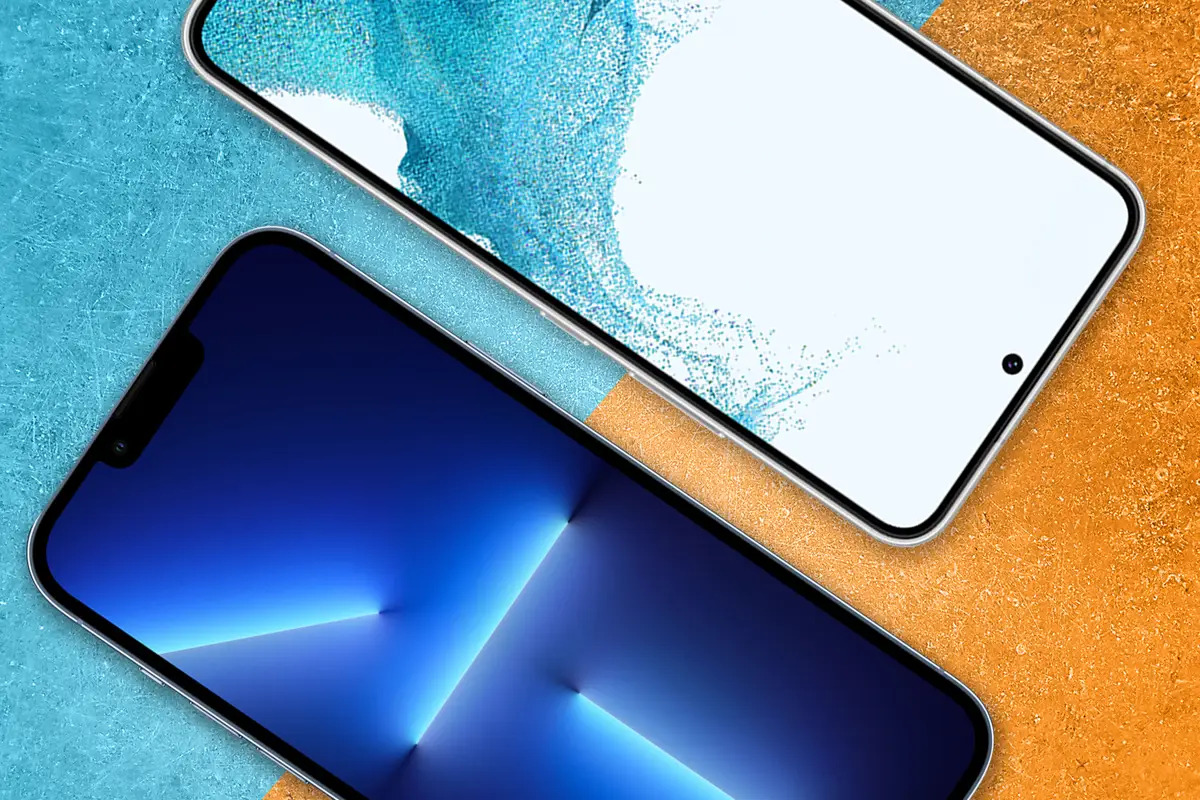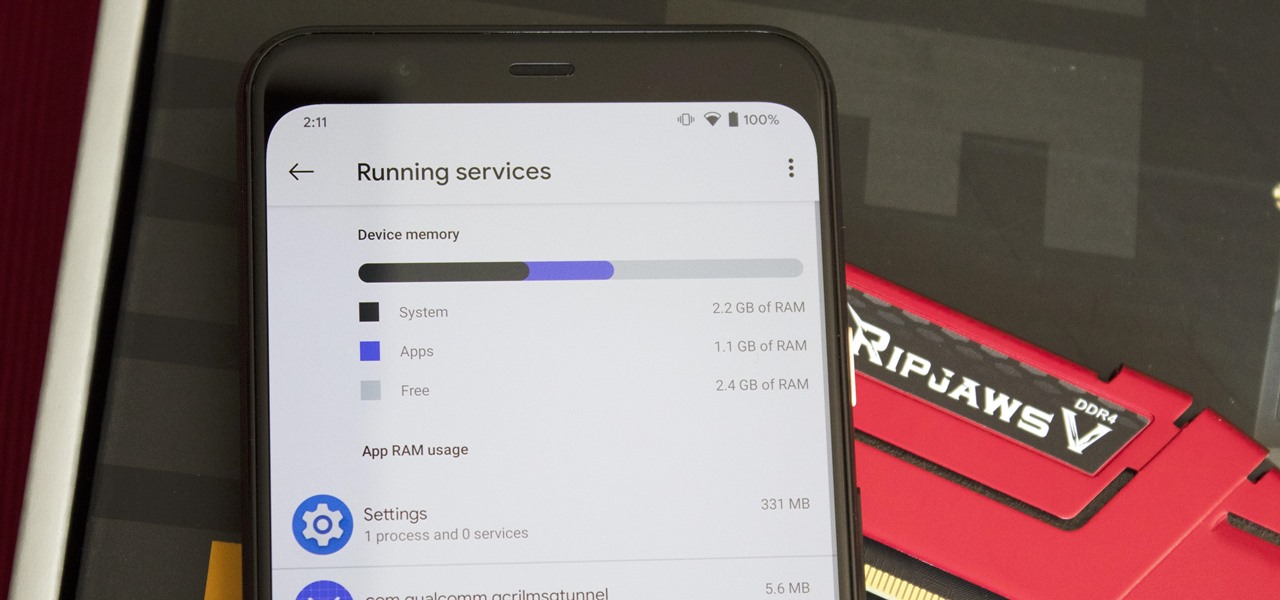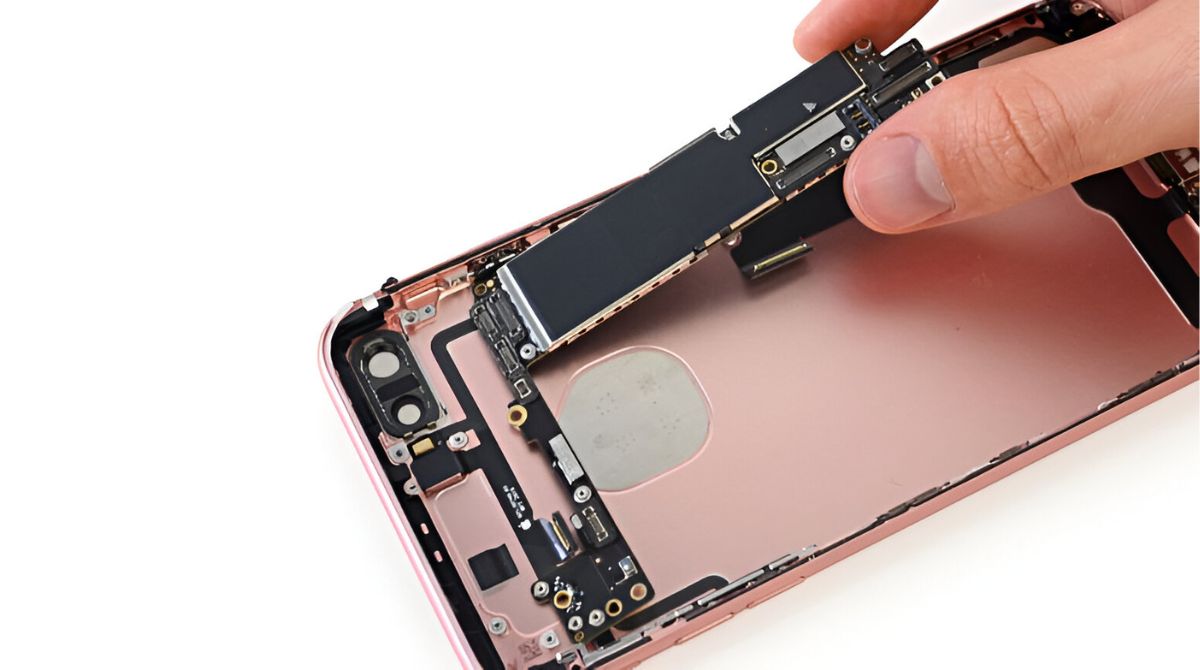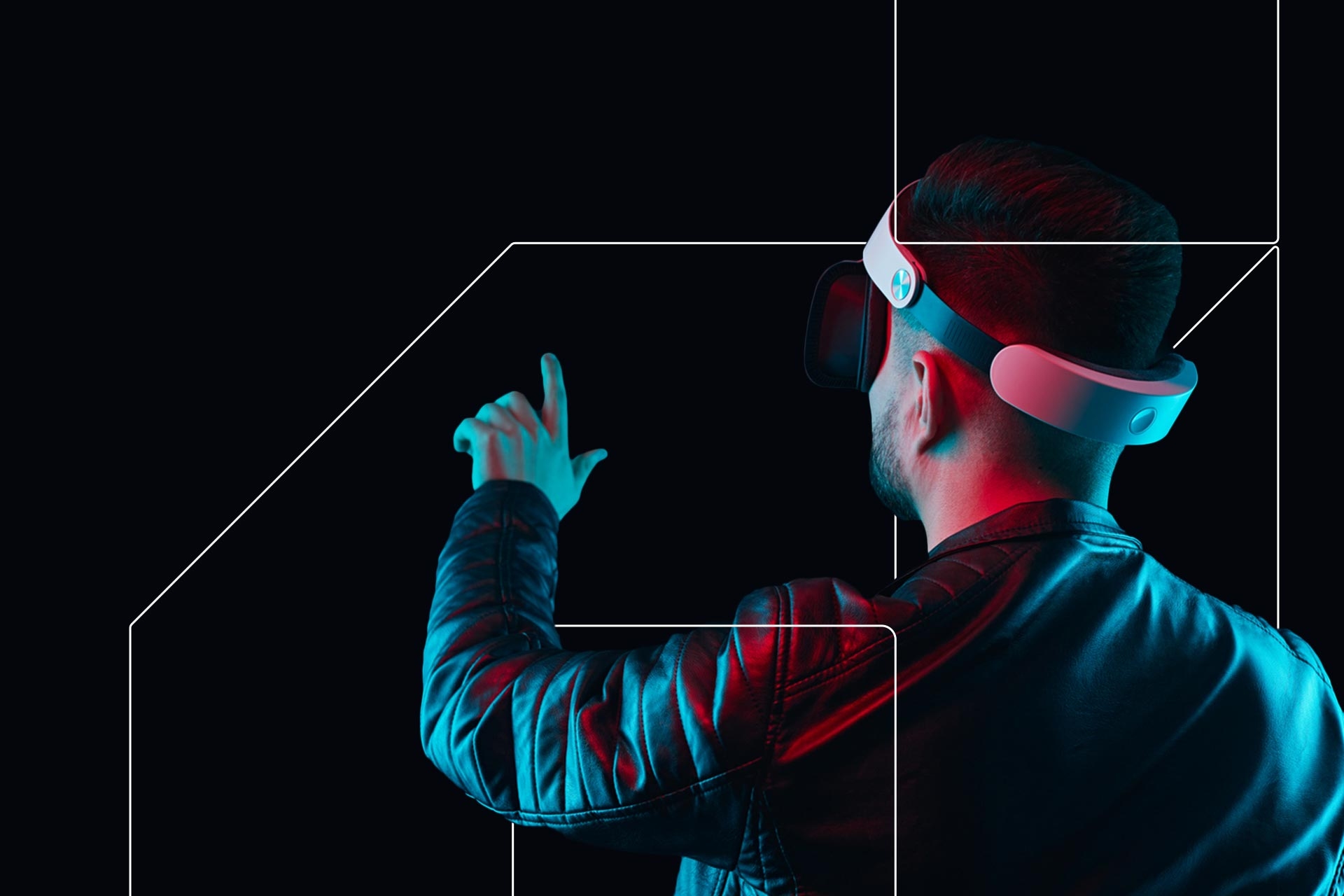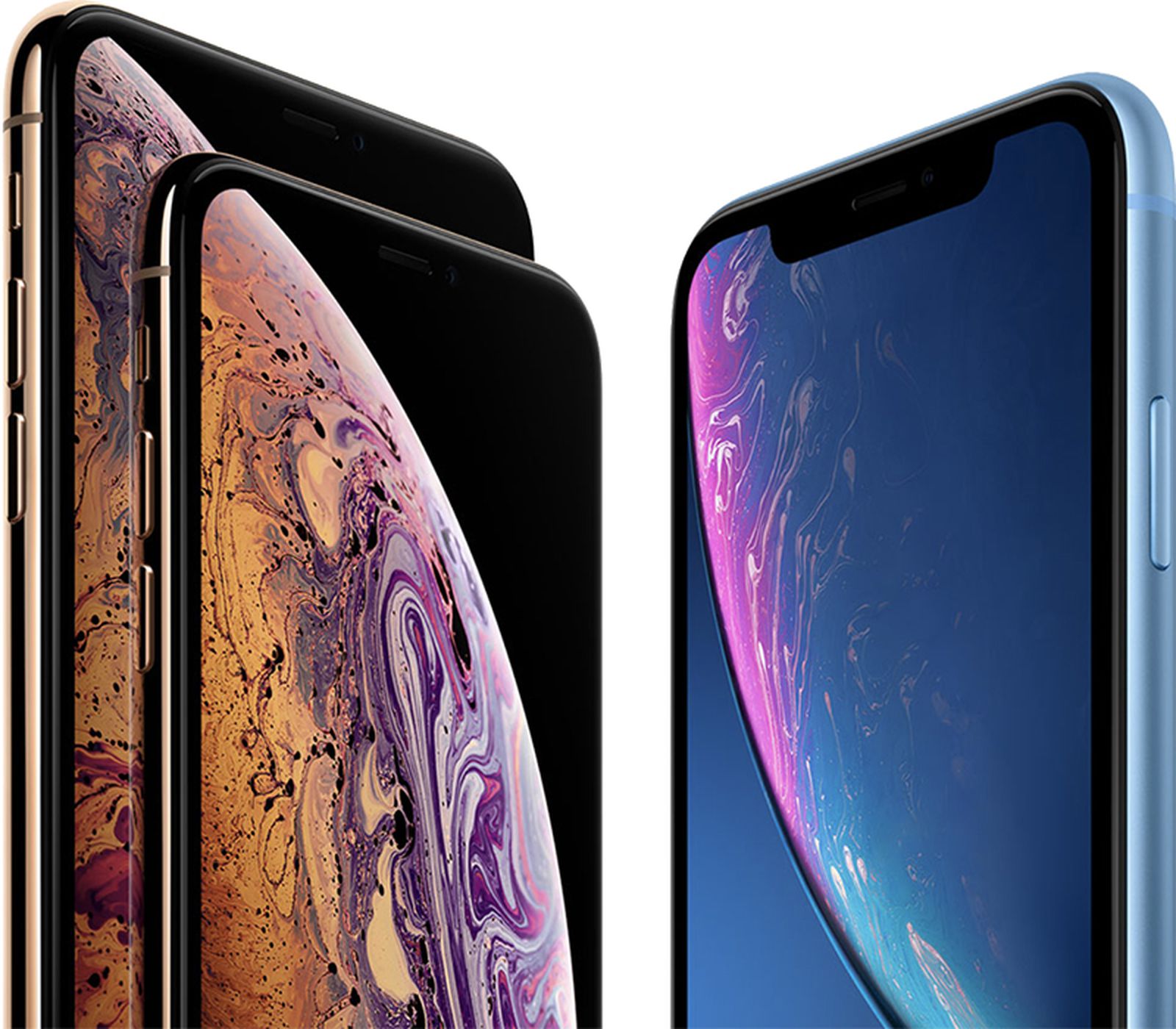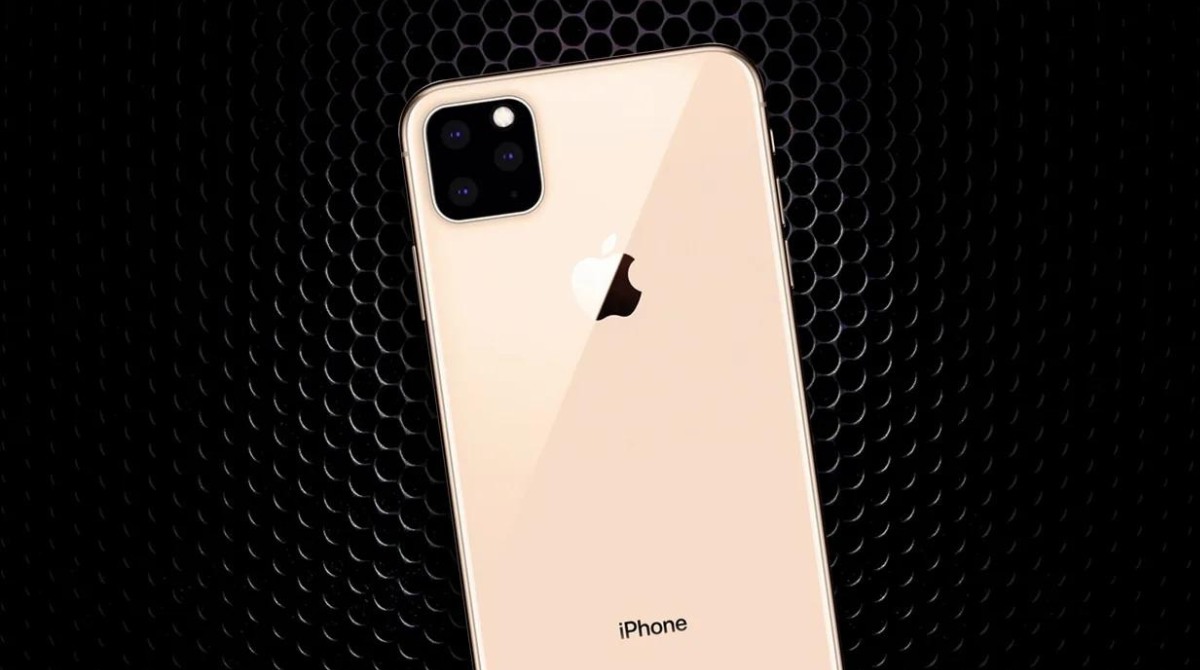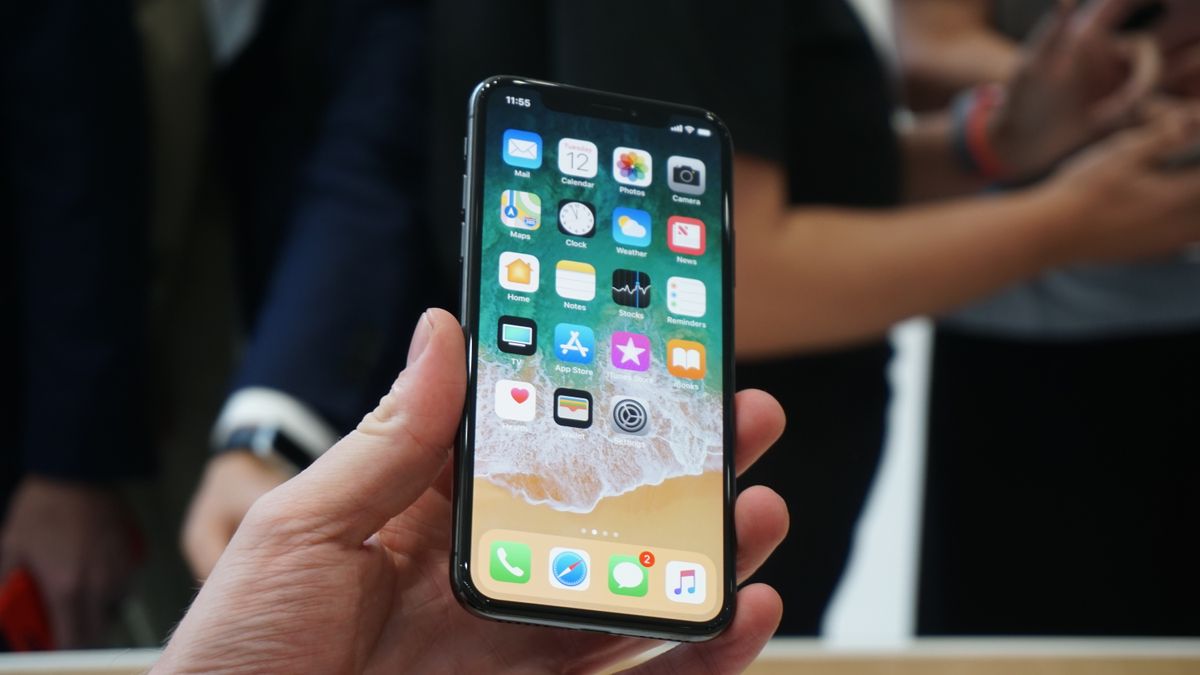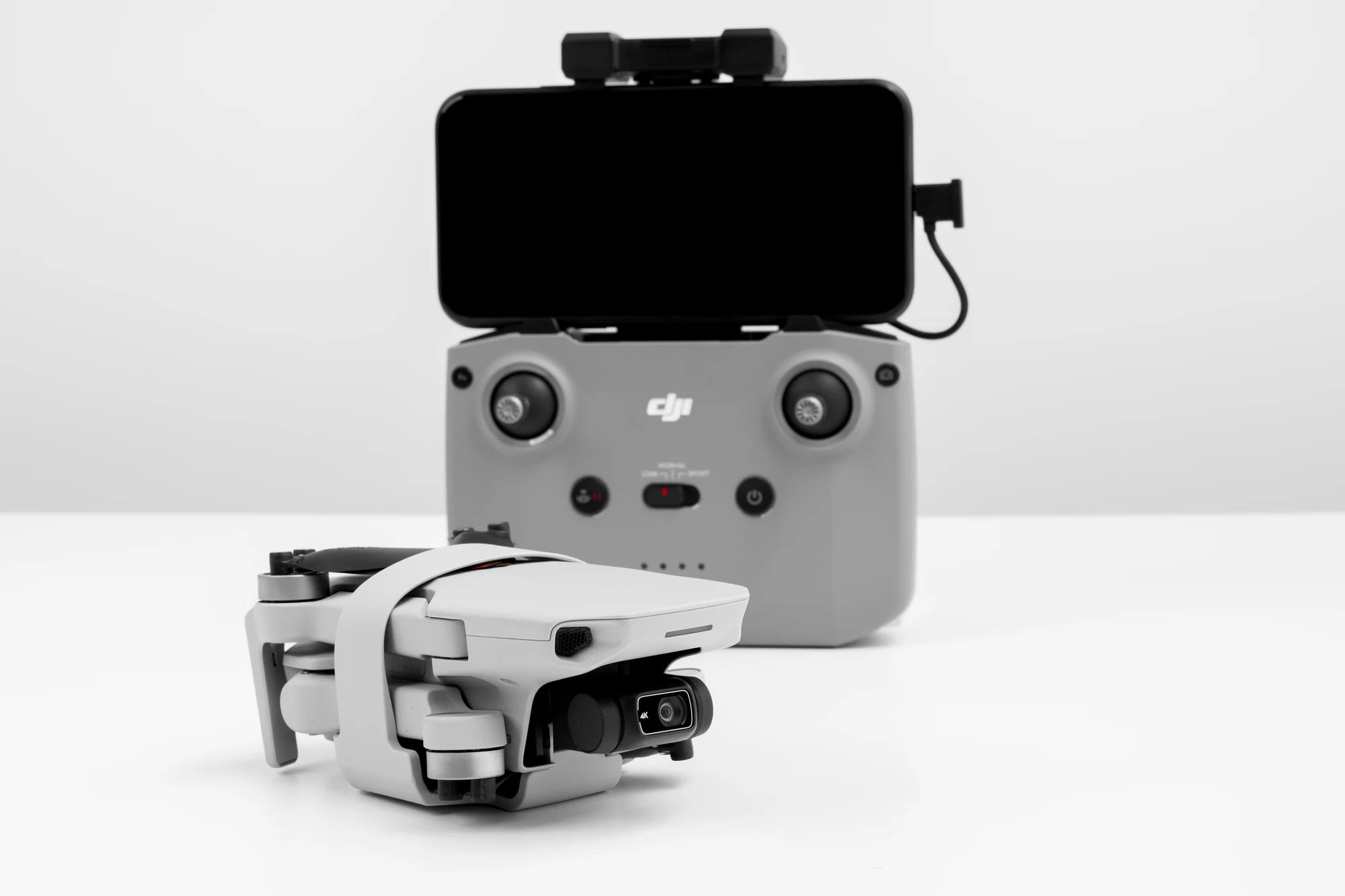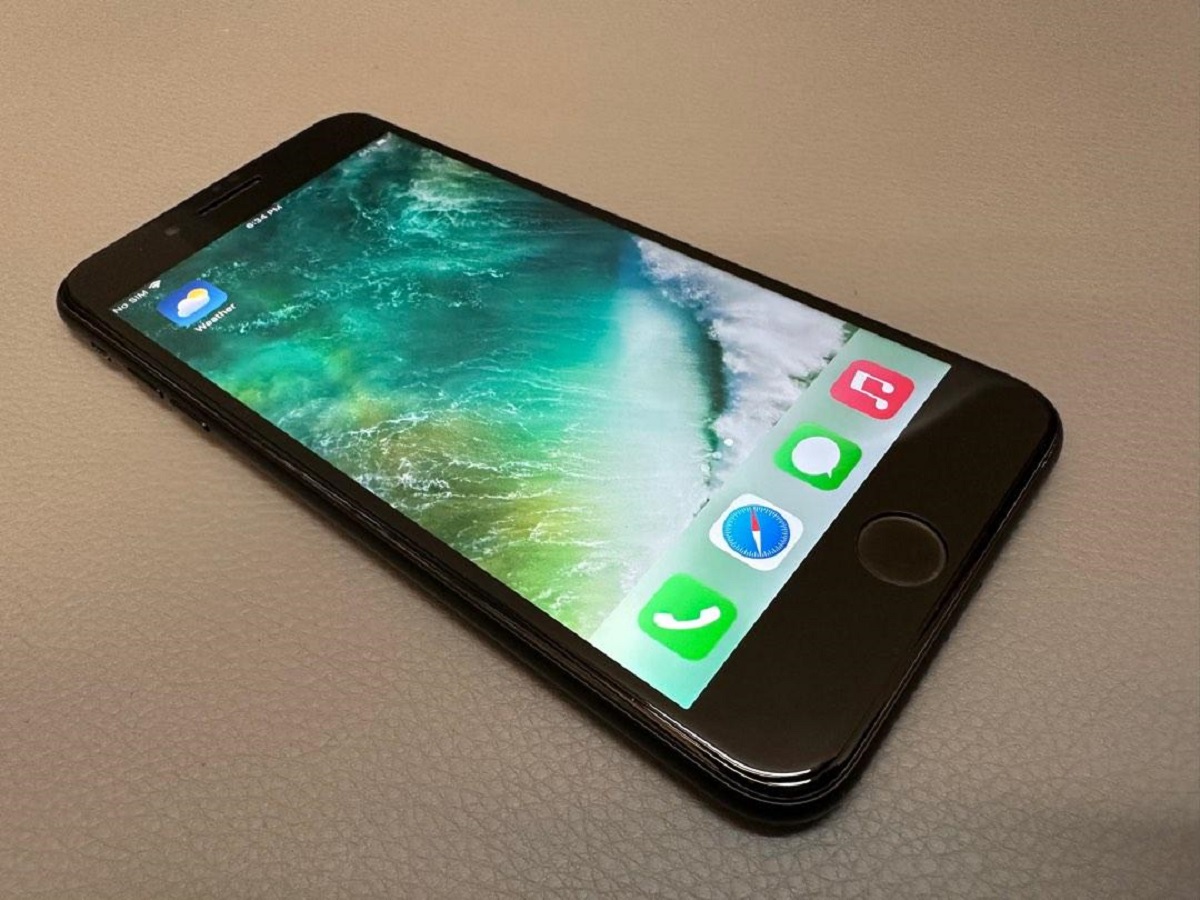Introduction
The ongoing battle between Android and iPhone users is one that has spanned years, sparking endless debates and fueling fierce loyalty among fans. Both platforms have their strengths and weaknesses, but determining which one is better often comes down to personal preference and individual needs. In this article, we will delve into the various aspects of Android and iPhone devices to help you make an informed decision about which is the better option for you.
When it comes to choosing a smartphone, it’s essential to consider factors such as design, operating system, app store, customization options, battery life, camera quality, security, integration capabilities, and pricing. By examining these key areas, you can gain insights into the strengths and weaknesses of each platform, allowing you to make an informed choice that aligns with your priorities and preferences.
Android, an open-source operating system developed by Google, is known for its extensive customization options, diverse device range, and flexibility. On the other hand, Apple’s iPhone features a sleek and uniform design, a closed ecosystem, and an intuitive user interface.
In this article, we will evaluate the design and build quality of Android and iPhone devices, compare the features and functionalities of their respective operating systems and user interfaces, assess the app stores and availability of applications, analyze customization options, battery life, and performance, examine camera quality and features, explore security and privacy measures, discuss integration with other devices and ecosystems, and consider the pricing and affordability of both platforms.
By providing a comprehensive analysis of these areas, we aim to help you understand the key differences and advantages of Android and iPhone devices, enabling you to make a well-informed decision when choosing your next smartphone.
Design and Build Quality
When it comes to design and build quality, both Android and iPhone devices offer distinctive features and aesthetics that cater to different preferences.
Android devices come in a wide variety of designs, thanks to the diverse range of manufacturers that produce them. This allows users to choose from an array of sizes, shapes, materials, and styles. From sleek and minimalist designs to rugged and durable constructions, Android offers something for everyone. However, this variety can also lead to inconsistencies in quality, as some budget-friendly Android phones may not have the same level of build quality as their high-end counterparts.
On the other hand, iPhones are known for their premium and elegant designs. Apple places a strong emphasis on aesthetics and attention to detail, resulting in devices that are sleek, stylish, and well-crafted. The use of premium materials such as glass and aluminum further adds to the overall quality and feel of the devices. iPhone users can expect a uniform and cohesive design across different models, along with a sense of luxury and sophistication.
In terms of durability, both Android and iPhone devices have their strengths. Some Android phones are built to withstand harsh conditions, with waterproof and shockproof features that make them ideal for outdoor enthusiasts or those working in rugged environments. iPhones, while not as rugged, still boast excellent build quality and are generally more resistant to everyday wear and tear.
Ultimately, the choice between Android and iPhone in terms of design and build quality comes down to personal preference. If you value versatility and a wider range of design options, Android might be the better choice for you. However, if you appreciate the sleek and premium look of Apple devices, along with a consistent and well-crafted design, then the iPhone may be more appealing.
Operating System and User Interface
The operating system (OS) and user interface (UI) of a smartphone play a significant role in the overall user experience. Android and iPhone devices have distinct approaches when it comes to their operating systems and user interfaces.
Android, being an open-source platform, offers a high level of customization and flexibility. Users can personalize their device’s interface by choosing from various launchers, widgets, and themes. This allows for a more tailored experience based on individual preferences. Additionally, Android provides a more open ecosystem, allowing users to install apps from third-party sources outside of the official Google Play Store, giving them more freedom in app selection.
On the other hand, iPhones have a closed ecosystem, meaning the iOS operating system is exclusively developed for Apple devices. While this limits customization options compared to Android, it ensures a more streamlined and consistent experience across all iOS devices. Apple’s iOS offers a user-friendly interface with a focus on simplicity and intuitive navigation. The UI design is clean, and the platform is known for its ease of use and smooth performance.
Both Android and iOS have features that enhance productivity and convenience. Android devices provide seamless integration with Google services, such as Gmail, Google Drive, and Google Assistant. This makes it easier for users who heavily rely on these services to manage their digital lives. On the other hand, iPhones offer a seamless ecosystem where all Apple devices work seamlessly together. Features like iMessage, FaceTime, and AirDrop allow for effortless communication and file sharing between Apple devices.
When it comes to updates, Android devices often suffer from fragmentation due to the vast number of manufacturers and versions. This means that some devices may not receive the latest updates or may experience delays in receiving them, which can impact security and access to new features. In contrast, Apple releases regular updates for all its devices, ensuring that users have access to the latest features, bug fixes, and security patches.
Ultimately, the choice between Android and iPhone in terms of the operating system and user interface depends on your preferences for customization, ecosystem integration, and ease of use. Android provides more flexibility, while iPhone offers a seamless and user-friendly experience within its closed ecosystem. Consider your needs and priorities to determine which platform aligns best with your preferences.
App Store and Apps
When it comes to the availability and quality of apps, both Android and iPhone platforms offer a wide range of options, but there are some key differences to consider.
Android users have access to the Google Play Store, which boasts a vast library of apps, including free and paid options. The open nature of the Android platform allows for greater flexibility, as users can also install apps from third-party sources. This means that Android users have a broader selection of apps to choose from, including more niche and specialized options. However, this openness can also lead to a higher possibility of encountering malware or low-quality apps if not careful.
On the other hand, the Apple App Store, available exclusively to iPhone users, is known for its stringent app review process. Apple maintains strict quality control, ensuring that apps available in their store meet certain standards of performance, security, and usability. This results in a more curated and reliable selection of apps. While the Apple App Store may have a slightly smaller library compared to the Google Play Store, it generally offers a higher standard of quality and can be more suitable for users who prioritize a secure and seamless app experience.
In terms of app updates, both platforms offer regular updates to improve performance, fix bugs, and introduce new features. However, due to the fragmentation of the Android platform, it may take longer for some Android devices to receive updates compared to iPhones. This can result in a delay in accessing new features or security improvements. On the other hand, Apple’s closed ecosystem ensures that updates are rolled out consistently across all devices, allowing users to enjoy the latest app features and enhancements.
It is worth considering that some apps may be exclusive to one platform or have different functionalities and user experiences depending on the operating system. Therefore, it is essential to check app availability and reviews specific to your chosen platform before making a decision.
Ultimately, the choice between Android and iPhone in terms of app stores and apps depends on your priorities. If you value a wide selection of apps and the ability to customize your app experience, then Android may be more suitable. If you prioritize security, reliability, and a curated app catalog, then the Apple App Store can offer a more streamlined and trustworthy experience.
Customization and Personalization
When it comes to customization and personalization options, Android devices offer a significant advantage over iPhones. Android’s open-source nature allows for extensive customization, giving users the ability to personalize their device’s appearance and functionality according to their preferences.
One of the most noticeable aspects of Android’s customization is the ability to change the home screen launcher. Users can choose from a variety of launchers available on the Google Play Store, each offering different layouts, themes, and customization options. This allows for a completely customized home screen experience, where users can arrange app icons, widgets, and shortcuts to their liking.
Additionally, Android devices provide the option to install third-party keyboards, giving users the freedom to select a keyboard that suits their typing style and preferences. Users can also customize system-wide themes and fonts, further enhancing the overall look and feel of the device.
Furthermore, Android users have more control over app permissions, allowing them to grant or deny specific permissions for each installed app. This gives users greater privacy and security control, as they can decide which apps have access to sensitive information.
On the other hand, iPhones have more limited customization options. Apple values a consistent and streamlined user experience, which means there are fewer options for customizing the appearance and functionality of the device. While the iOS operating system does offer some customization features, such as changing wallpaper and organizing app icons into folders, the level of customization is not as extensive as that of Android.
However, it is worth noting that iPhones do provide the ability to personalize certain aspects of the device. Users can customize their device’s look and feel through the selection of various themes, wallpapers, and app icons available on the App Store. Additionally, iOS offers features like Siri Shortcuts, which allow users to automate tasks and create personalized workflows.
Ultimately, if customization and personalization are important factors for you, Android devices offer a wider range of options and flexibility. On the other hand, if you prefer a more coherent and streamlined user experience, iPhones provide a more curated and consistent approach to customization.
Battery Life and Performance
Battery life and performance are crucial factors to consider when choosing a smartphone, as they directly impact the device’s usability and overall user experience. Both Android and iPhone devices have made significant advancements in these areas, but there are notable differences between the two platforms.
In terms of battery life, Android devices typically offer a greater variety in terms of battery capacity and options. This means that users can choose a device that aligns with their specific needs, whether it be a phone with a long-lasting battery or one that prioritizes sleek design and slim profile. However, it is important to note that battery life can vary significantly depending on factors such as device usage, screen brightness, app activity, and network connectivity.
On the other hand, iPhones are known for their optimization and efficiency when it comes to battery life. Apple’s integration of hardware and software allows them to provide a seamless and reliable battery performance. While iPhones may not offer as much customization in terms of battery capacity, they often provide a good balance between usability and battery efficiency. Additionally, features like Low Power Mode help optimize battery life during times of heavy usage or when the battery is running low.
When it comes to performance, both Android and iPhone devices have made significant strides. Android devices, particularly flagship models, often come equipped with powerful processors, ample RAM, and efficient software optimization. This combination of hardware and software allows for smooth multitasking, fast app loading times, and graphics-intensive gaming capabilities.
Similarly, iPhones are renowned for their excellent performance due to Apple’s integration of hardware and software. The optimization between iOS and the hardware components ensures a fluid and responsive user experience. iPhones also tend to have more stringent app regulations, resulting in a more stable and reliable performance across various applications.
Ultimately, the choice between Android and iPhone regarding battery life and performance will depend on your specific needs and preferences. Android offers a wider variety of options in terms of battery capacity and customization, while iPhones provide a well-optimized and efficient performance out of the box. Consider factors such as your usage patterns, battery requirements, and performance expectations to make an informed decision.
Camera Quality and Features
The camera quality and features of a smartphone are significant considerations for many users, as capturing high-quality photos and videos has become an essential part of daily life. Both Android and iPhone devices offer advanced camera capabilities, but there are distinguishing factors that set them apart.
Android devices often feature a wide range of cameras, with options ranging from single-lens to triple-lens setups, along with various sensors for depth detection and wide-angle shots. This diversity allows users to choose a device that suits their specific photography needs and preferences. Furthermore, many Android devices come with robust manual controls, allowing users to adjust settings such as ISO, shutter speed, and white balance, providing greater control over their photography.
In recent years, iPhone cameras have gained a reputation for their exceptional image quality and ease of use. Apple places a strong emphasis on software optimization, resulting in vivid colors, accurate exposure, and detailed images. iPhones also come equipped with advanced features like Smart HDR, Night mode, and Deep Fusion, which enable users to capture stunning photos in various conditions. Additionally, the iPhone’s user-friendly camera app offers simplicity and intuitive controls, making it accessible to users of all skill levels.
Video recording capabilities are also essential considerations when comparing camera quality. Android devices often excel in this area, providing features like 4K video recording, manual controls, and slow-motion video capture. Many Android devices also offer advanced stabilization technology, which helps create smooth and professional-looking videos.
Similarly, iPhones are known for their exceptional video quality, providing features such as 4K recording, cinematic video stabilization, and extended dynamic range. Additionally, Apple’s consistent and reliable software optimization ensures that videos captured on iPhones showcase excellent color accuracy and sharpness.
It’s important to note that image processing and camera performance can vary between Android devices, as manufacturers may implement their own enhancements and optimizations. In contrast, Apple’s closed ecosystem allows for tighter control over image processing, resulting in a more consistent experience across iPhone models.
Ultimately, the choice between Android and iPhone devices in terms of camera quality and features depends on your priorities as a photographer or videographer. Android devices offer a wide range of options and manual controls, making them a great choice for users who enjoy tinkering with camera settings and want more versatility. On the other hand, iPhones provide a user-friendly experience, excellent image and video quality, and reliable software optimization, making them ideal for users who prioritize simplicity and consistently impressive results.
Security and Privacy
When it comes to security and privacy, both Android and iPhone devices prioritize the protection of user data, but they have different approaches and features to address these concerns.
Android, being an open-source platform, allows for more flexibility and customization. However, this openness can also make Android devices more susceptible to security risks if not properly managed. To mitigate these risks, Android offers a range of security features, including built-in malware protection, encryption options, and the ability to install security apps from trusted sources. Google Play Protect is an automated security system that scans apps for malware and warns users about potentially harmful applications.
Additionally, Android devices offer granular control over app permissions, allowing users to determine which apps have access to specific data or features. This gives individuals more control over their privacy and allows them to manage the flow of personal information more effectively.
On the other hand, iPhones are known for their strong security measures and privacy-focused approach. Apple’s closed ecosystem and tight control over software and hardware result in a more secure environment. The iOS operating system has built-in security features such as Face ID or Touch ID for device authentication, robust encryption, and a dedicated security chip called the Secure Enclave. These features contribute to the privacy and protection of user data stored on the device.
Apple’s strict app review process for the App Store also enhances security and privacy. App developers must adhere to specific guidelines, reducing the likelihood of malicious or privacy-invading apps making their way onto iPhones. Additionally, apps on iOS have limited access to user data, ensuring that personal information is kept private and only accessible by authorized apps.
Both Android and iPhones receive regular security updates to patch vulnerabilities and address emerging threats. However, Android devices often face challenges with timely updates due to the fragmentation of the platform, as manufacturers and carriers may delay or omit updates. In contrast, Apple consistently releases updates to all supported devices, ensuring that users have access to the latest security enhancements and patches.
Ultimately, the choice between Android and iPhone in terms of security and privacy will depend on your needs and priorities. While Android provides more customization options and control over app permissions, iPhones offer a more secure and privacy-oriented ecosystem. Consider factors such as your data sensitivity, level of trust in app sources, and willingness to sacrifice some customization for enhanced security when making your decision.
Integration with Other Devices and Ecosystem
Integration with other devices and ecosystem compatibility is an important consideration for many users, as it determines the level of convenience and seamless connectivity they can experience across different platforms and devices. Both Android and iPhone devices offer integration with other devices and ecosystems, but there are distinct differences to consider.
Android devices, being more diverse in terms of manufacturers and models, often provide greater compatibility with a wide range of devices and platforms. For example, Android users can easily connect their devices to Windows PCs or Chromebooks and enjoy seamless file transfer, synchronization of data, and even the ability to run Android apps on these devices. Android devices also support a variety of smart home devices, wearables, and other IoT (Internet of Things) devices, thanks to the broad adoption of the platform by different manufacturers.
On the other hand, iPhones excel in integration with other Apple devices and the Apple ecosystem. The seamless and tightly integrated nature of Apple’s ecosystem allows for effortless connectivity between iPhones, iPads, Macs, Apple Watches, and other Apple devices. Features such as Handoff, Universal Clipboard, and Continuity ensure continuity and smooth transitions between different devices, allowing users to pick up tasks and activities seamlessly across their Apple devices. Additionally, services like iMessage, FaceTime, and AirDrop are exclusive to the Apple ecosystem, enhancing communication and file sharing between Apple devices.
Both Android and iPhones support popular communication and productivity apps like email clients, messaging apps, and cloud storage services. However, there may be variations in the user experience and availability of certain features in these apps depending on the operating system. It’s important to consider which apps you rely on and ensure they are compatible with your chosen platform.
When it comes to cloud storage, Android devices often provide more flexibility in terms of storage options and integration with various services, such as Google Drive, Dropbox, and Microsoft OneDrive. iPhones, on the other hand, are tightly integrated with iCloud, Apple’s cloud storage solution, which seamlessly syncs photos, videos, documents, contacts, and more across Apple devices. The choice between Android and iPhone in terms of cloud storage will depend on your existing preference and usage of specific cloud services.
Ultimately, the choice between Android and iPhone regarding integration with other devices and ecosystem compatibility depends on your existing devices, preferences, and usage patterns. If you already own several Apple devices, the seamless integration offered by iPhones and the Apple ecosystem can enhance your overall user experience. If you prefer a more open ecosystem and compatibility across a wider range of devices and platforms, Android devices may be a better fit.
Pricing and Affordability
Pricing and affordability are important factors to consider when choosing a smartphone. Both Android and iPhone devices offer a wide range of options in terms of price points, allowing users to find a device that fits their budget. However, there are some key differences to keep in mind.
Android devices are known for their wide range of prices, accommodating various budget ranges. From budget-friendly options to high-end flagship devices, there is an Android phone available for every price point. This variety gives users the flexibility to choose a device that aligns with their specific needs and financial capabilities. Additionally, Android devices often offer a great value proposition, with competitive features and specifications at a lower price compared to iPhones.
In contrast, iPhones are known for their premium pricing. Apple positions itself as a provider of high-quality, well-crafted devices, and this is reflected in the price. iPhones generally come with a higher price tag compared to many Android devices, especially for the latest models. However, Apple does offer more affordable options, such as older iPhone models and the iPhone SE, catering to users who are budget-conscious.
It’s worth noting that while the upfront cost of an iPhone may be higher, the long-term value and resale potential of iPhones tend to be higher compared to many Android devices. Additionally, Apple offers regular software updates for its devices, ensuring that even older iPhones can continue to receive new features and security enhancements.
When considering affordability, it’s important to also take into account factors beyond the initial purchase price. This includes factors such as long-term costs, including potential repair costs, the availability of affordable accessories, and the overall longevity of the device. Android devices, due to their wider availability and diverse manufacturer base, may offer more affordable options for repairs and a larger selection of affordable accessories.
Ultimately, the choice between Android and iPhone in terms of pricing and affordability depends on your budget and priorities. If you are looking for a wider range of price options and value for money, Android devices may be more appealing. On the other hand, if you prioritize premium quality, longevity, and potential resale value, iPhones may be worth the higher upfront cost.
Conclusion
Choosing between Android and iPhone ultimately comes down to personal preference and individual needs. Both platforms offer unique features and capabilities that cater to different users, and understanding these differences can guide you towards making the right decision for your smartphone purchase.
Android devices are known for their extensive customization options, diverse device range, and flexibility. They provide a wide array of choices in terms of design, performance, and price. Android is an ideal choice for users who prioritize customization, versatility, and a wide range of app options. Additionally, if you prefer seamless integration with other platforms and devices or want more affordable options, Android may be the better choice for you.
On the other hand, iPhones feature a sleek and uniform design, a closed ecosystem, and an intuitive user interface. They are known for their premium build quality, exceptional camera performance, and security measures. iPhones are ideal for users seeking simplicity, reliability, and a seamless user experience within the Apple ecosystem. If you already own other Apple devices or prioritize privacy and security, an iPhone may be the right choice for you.
It’s important to consider factors like design and build quality, operating system and user interface, app store and apps, customization and personalization options, battery life and performance, camera quality and features, security and privacy, integration with other devices and ecosystem, and pricing and affordability. By evaluating these factors based on your needs and preferences, you can make an informed decision about whether an Android or iPhone device is best suited to you.
Ultimately, there is no definitive answer to the question of which is better, Android or iPhone. It varies from person to person. It is recommended that you assess your priorities, try out different devices if possible, and choose the one that aligns best with your lifestyle, preferences, and budget. Both Android and iPhone devices offer exceptional technology, and whichever option you choose, you can be sure to have a powerful, feature-rich smartphone at your fingertips.







